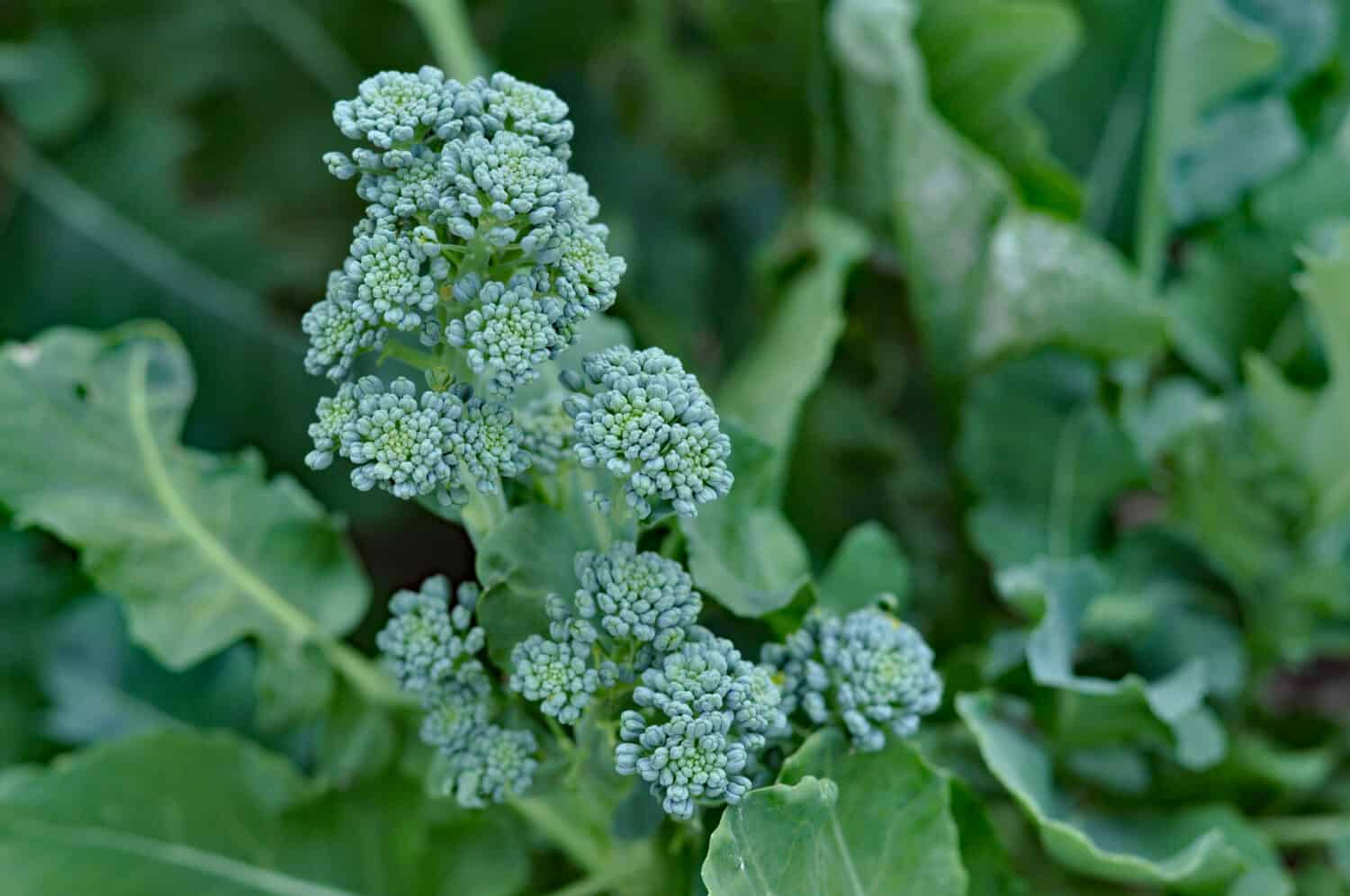Tomatoes again? Lettuce and other greens, ho-hum. Zucchini, summer squash, even watermelon…so basic. If you’re a backyard gardener who’s looking to try something different and delicious, growing broccolini could become your newest obsession.
Huh? Brocco-whati?

Increasingly popular broccolini has been on the market since the late 90s.
©marcin jucha/Shutterstock.com
You’ve probably encountered this vegetable at the market. It looks like a taller, skinnier version of broccoli, with smaller florets on top. Broccolini is easy to cook. Just steam it or roast it, and toss with oil or seasonings for a crisp, delicious veggie that you can eat stems and all. If you’ve tried it, you know that broccolini has a subtler, even sweeter flavor than broccoli. What you may not know is that despite the name, broccolini is not some obscure heirloom Italian broccoli that finally got noticed by the produce industry and hit the big time. Broccolini is actually a trade name; you’ll also find the vegetable sold as sprouting broccoli, baby broccoli, tender stem broccoli, mini broccoli, even Asparabroc (for its asparagus-like stems).
Broccolini’s roots go back to Japan in 1993 when a seed company developed the plant as a hybrid between standard broccoli and gai lan, also called Chinese kale. The broccolini name was added in 1998 when the veggie was put on sale in the U.S. And let’s admit it, “broccolini” sounds way more appealing than “Asparabroc.”
How Do I Start My Broccolini Garden?
If you’re a fan of this vegetable, you know it’s more costly than standard broccoli, which is one more reason to develop your own backyard supply. One of the best things about growing broccolini is that once you begin to harvest the broccolini shoots, new ones will grow, so you’ll get multiple crops throughout the growing season.
Unless you’re lucky enough to have a nursery nearby that sells seedlings, you’ll have to start the seeds yourself. It’s recommended to grow seedlings indoors first, then transplant them, rather than try to sow the seeds directly in the garden. Since broccolini is a trademarked name, some companies list the seeds as Asparabroc, mini-broccoli, etc. But with some extra searching, you’ll find they’re generally available from seed sellers.
How to Grow Broccolini
Start growing the seeds about six weeks before the last frost date in your area. They should germinate in 7-10 days. The seedlings are ready to transplant into the garden after 4-5 weeks, or when they have 6-8 leaves each. Harden them off first; set the seedlings outside for increasing periods of time over the course of a week. Broccolini grows best when the temperature is 65-80 degrees F. That means depending on your local climate, you may need to get them outside early so they have time to mature before the high heat of summer. In that case, be prepared to cover them up at night if a temperature drop or a late frost is predicted.
Grow your broccolini seedlings in a spot that gets full sun and has well-draining soil. Prep the soil with some nice, nutritious compost, and plant seedlings about a foot apart from each other, in rows two feet apart. You can use a mulch of straw or shredded leaves to control weeds and help the soil retain moisture.
Broccolini like to be well-hydrated, taking at least 1-2 inches of water a week. Water every few days, or sooner if the soil starts to dry out.
Harvesting Your Broccolini

Harvest the shoots that grow off the central stalk, and new shoots will keep growing.
©Verity McColl/Shutterstock.com
Broccolini is harvested by pulling the side shoots off the central stalk of each plant. When the plant develops its central crown, cut it off, along with six inches of the stem. This encourages the side shoots to grow out. Cut off each shoot when the heads are tight and firm, and the shoots resemble that pricy supermarket broccolini you’ve been buying. Cut the shoot close to the main stem—remember, the whole shoot is edible— but leave one set of leaves intact. Keep this up and you might get 3 or more harvests from each plant as new shoots grow in! If you wait too long and flower buds start to form, don’t worry. The flowers are edible too!
Pest Management
Pests that affect broccoli also go after broccolini. This includes the white cabbage moth, which you can defend against using row covers, which keeps out some other pests as well. Or check under the leaves frequently to remove any eggs that appear. Pick off any caterpillars. Aphids can be controlled by zapping them off with a blast of water from a garden hose. It’s a good idea not to plant broccolini or other cabbage family crops in the same space in successive years, to keep pathogens from the previous year from infecting the new crop.
There are many companion plants that defend broccoli from pests and attract beneficial insects, and these may help broccolini as well. Options include garlic and onions, celery, rosemary, and chamomile. Check each plant’s growing needs and plan accordingly.
The photo featured at the top of this post is © iStock.com/bhofack2
Thank you for reading! Have some feedback for us? Contact the AZ Animals editorial team.






